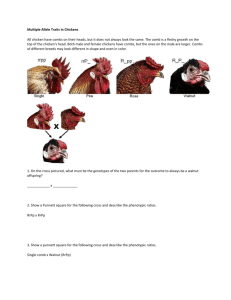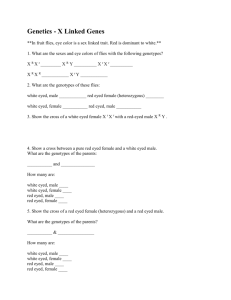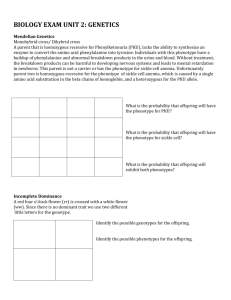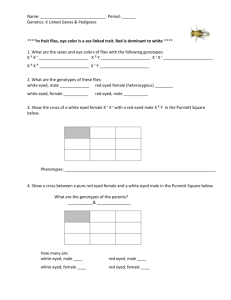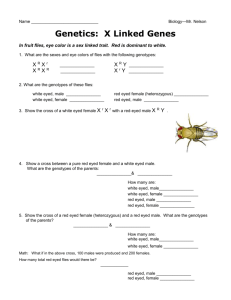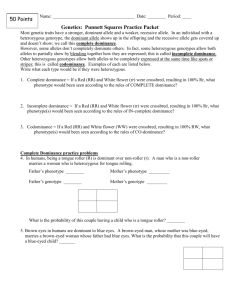Genetics Problems
advertisement
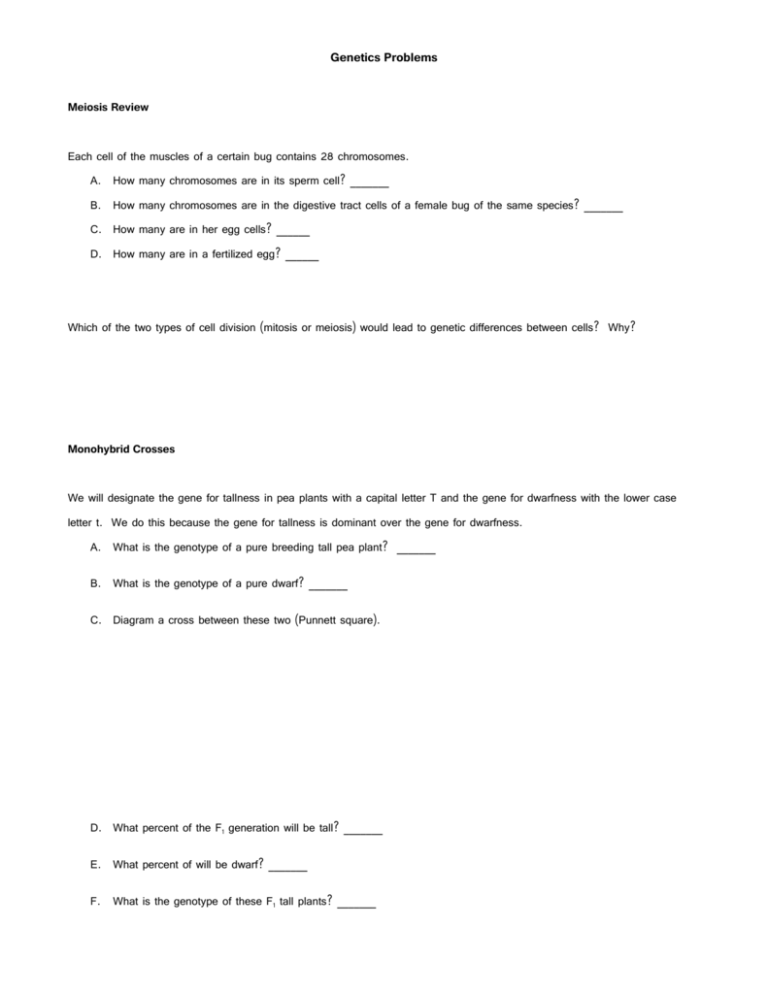
Genetics Problems Meiosis Review Each cell of the muscles of a certain bug contains 28 chromosomes. A. How many chromosomes are in its sperm cell? _______ B. How many chromosomes are in the digestive tract cells of a female bug of the same species? _______ C. How many are in her egg cells? ______ D. How many are in a fertilized egg? ______ Which of the two types of cell division (mitosis or meiosis) would lead to genetic differences between cells? Why? Monohybrid Crosses We will designate the gene for tallness in pea plants with a capital letter T and the gene for dwarfness with the lower case letter t. We do this because the gene for tallness is dominant over the gene for dwarfness. A. What is the genotype of a pure breeding tall pea plant? _______ B. What is the genotype of a pure dwarf? _______ C. Diagram a cross between these two (Punnett square). D. What percent of the F1 generation will be tall? _______ E. What percent of will be dwarf? _______ F. What is the genotype of these F1 tall plants? _______ G. Take 2 of these hybrid (heterozygous) F1 tall plants and show what would happen if they were crossed (Punnett square). H. List all the different genotypes that will be produced and the proportions of each. I. List the phenotypes and the proportions of each. Diagram a cross between a heterozygous tall pea plant and a pure breeding dwarf plant. Show the genotypes, phenotypes, and proportion of each. Another trait that Mendel studied in pea plants was seed color. He found that gray is dominant over white. We will use the letter G to represent the gene for gray and the letter g to represent the white gene. In the following crosses parents with known phenotypes, but unknown genotypes produce the following progeny: Parents Progeny Gray A. Gray x White B. Gray x Gray 81 Parental Genotypes White 80 118 _______ X _______ 40 _______ X _______ C. White x White 0 72 _______ X _______ D. Gray x White 83 0 _______ X _______ E. Gray x Gray 35 0 _______ X _______ Let us temporarily make the assumption that eye color in humans is controlled by a single pair of genes. We will say that brown eyes (B) are dominant over blue eyes (b). A. What is the genotype of a brown eyed individual who marries a blue eyed individual and produces a first offspring that is blue eyed? Show the cross! B. What are the expected proportions of eye color among offspring of a mating between two brown eyed individuals who each had one parent that was blue eyed? Show the cross! In genetics, it is not uncommon to have a parent with an unknown genotype. In cases such as this we do a “test cross” or “backcross.” We cross our unknown parent with the homozygous recessive and examine the proportions of the offspring. Answer the following using eye color from above. A. An unknown brown eyed individual marries an individual who is homozygous recessive and they have 6 kids. All of the kids have brown eyes. What was the brown eyed parent’s genotype? B. Another brown eyed person marries a blue eyed person and they also have 6 kids. Three of the kids are blue eyed and three are brown eyed. What was the brown eyed parent’s genotype?


